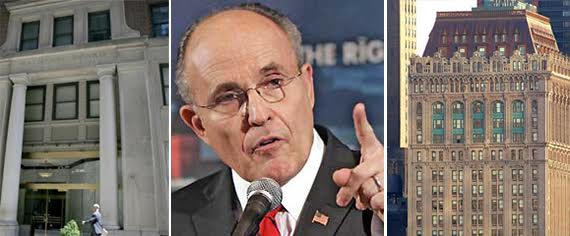Are well-heeled New Yorkers paying up to $8,000 a month eligible for rent-stabilization?
That’s the question at the heart of the current battle over 421g, a tax abatement created to spur residential development in the Financial District. Tenants at 421g buildings are now banding together and challenging their landlords, saying that their apartments — no matter how pricey — should remain rent-stabilized.
In two such cases, a landlord is claiming that it has the right to deregulate luxury units. And it has former New York City Mayor Rudolph Giuliani in its corner.
The 421g program was launched in 1995 by New York State, in an effort to woo residential developers to then-moribund Lower Manhattan. The program gave new developments in the area a hefty tax break, but required apartments to be rent-stabilized for the duration of the abatement. At least 32 buildings with nearly 5,600 apartments currently receive the abatement, according to data from the Independent Budget Office cited by the Wall Street Journal. But some landlords of these buildings have deregulated their units, arguing that once an apartment crosses the “luxury” threshold of $2,700 per month it should no longer be eligible for rent-stabilization.
At 90 West Street, a 410-unit rental building, more than 40 tenants are suing landlord Kibel Companies, arguing that their units should have been stabilized under 421g, given that Kibel’s abatement at that property continues until 2019. And at 85 John Street, Kibel sued two tenants who argued their apartments should remain rent-stabilized, although their rents were $7,250 a month, more than twice the deregulation threshold.
In September, Kibel secured a deposition from none other than Giuliani, who was mayor of New York City when the abatement was created. In his deposition, which was recently reviewed by The Real Deal, Giuliani said that under both his administration’s understanding of the law, and the understanding of legislators in the State Assembly at the time, 421g always allowed for the deregulation of units with monthly rents that had passed the luxury deregulation threshold, then $2,000 (now $2,700).
421g properties, Giuliani said, were intended to be “subject to rent stabilization to the same extent as, but not a greater extent than other rent stabilized properties.”
Giuliani had conveyed similar sentiments in a 1995 letter to then-State Senate Majority Leader and fellow Republican Joseph Bruno, who concurred with this interpretation in a written reply. (Kibel included this letter in its original legal action against 85 John tenants, but somehow convinced the ex-mayor to also give an in-person deposition.)
For many tenants of 421g buildings, however, there is no room for interpretation.
On Jan. 6, Serge Joseph of HMGDJ, an attorney representing tenants from both 90 West and 85 John, filed a motion to combine the two cases, saying 421g’s rent-stabilization requirements are “clear and unambiguous.” And tenants in other buildings are catching wind of what’s going on: On Tuesday evening, a group of tenants from 50 Murray Street, a 389-unit, 421g luxury rental in Tribeca, will meet with tenants of 90 West and 85 John, to learn more about what the tax break entails. Representatives for the landlord of 50 Murray, David Bistricer’s Clipper Equity, couldn’t immediately be reached for comment.
Much of the dispute seems to emerge from one clause in the abatement, 421g(6), which states: “Notwithstanding the provisions of any local law for the stabilization of rents in multiple dwellings…the rents of each dwelling unit in an eligible multiple dwelling shall be fully subject to control under such local law…”
In the 90 West case, the tenant side argues that this clause requires units to stay stabilized–period–and that the rent stabilization law allowing luxury deregulation does not apply. Sherwin Belkin, Kibel’s attorney at 85 John and 90 West, disagrees. He said that unlike J51 and 421a, the 421g statute allows for luxury decontrol. Belkin added that this view is found throughout the legislative record on both sides of the aisle, not just in the letters between Giuliani and Bruno.
Even if the right to rent-stabilized apartments is decided for tenants at 85 John and 90 West, stabilization doesn’t necessarily stop with the end of the abatement: according to the 421g law, landlords must include language in every lease and renewal stating the date of the abatement expiration and subsequent decontrol. In 2015, NY County Supreme Court judge Shlomo Hagler said in a decision that tenants in one apartment at 25 Broad Street had not been properly informed about the conditions of 421g, and thus were entitled to stabilized rents as long as they remained in their apartment.
The appellate court is yet to make a ruling on the 421g issue. But given the stakes involved — many of the 421g buildings contain hundreds of units and rent overcharges could total in the millions of dollars — the fight over the abatement is likely to be a drawn-out one.
